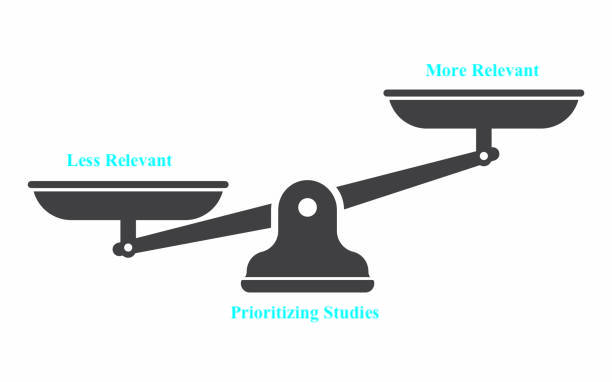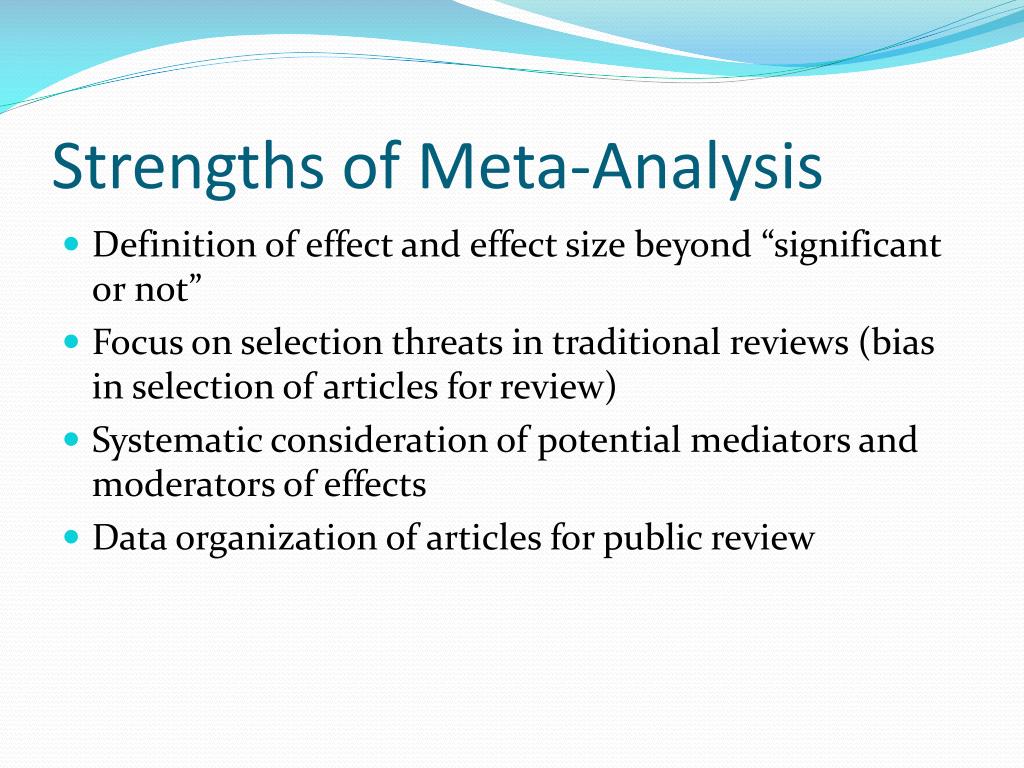
The impetus of research is to push the borders of knowledge in a systematic and pragmatic fashion. Often, scientists look deeply into other studies as a guide to shape the development of their own research question. However, it is possible to uncover trends and draw conclusions within existing studies, if looked upon with a structured and well-organized method. This method is known as a meta-analysis. The following sections will examine the research of Wipfli, Rethorst and Landers (2008) to gain insight and appreciation of the constituents of a quality meta-analysis.

Performing a meta-analysis requires a thorough review of existing literature. Wipfli et al. (2008) implemented the steps that Baumgartner and Hensley (2006) outlined in their book: compile references, determine criteria, review each study, decide which studies will be used, perform the meta-analysis, and report results. Below is a deeper breakdown of the meta-analysis Wipfli et al. (2008) performed.

Baumgartner and Hensley (2006) outlined compiling references as a first step in the meta-analysis process. One component of this step is to define research parameters. Wipfli et al. (2008) wanted to determine if exercise could significantly reduce anxiety compared to other interventions such as pharmaceuticals and counseling. Wipfli et al. (2008) achieved this by outlining keywords and phrases in their search such as exercise, physical activity, physical exercise, running, jogging, walking, weight lifting, weight training, anxiety, anxiety disorder, and mental health. Wipfli et al. (2008) also outlined which databases were used: PubMed, SportDiscus, PsycInfo, and Dissertation Abstracts International.

The second step Baumgartner and Hensley (2006) outlined is determining criteria. This can be seen as deciding which elements should be within a research study before extensive analysis of each article begins. Wipfli et al. (2008) determined that only randomized control studies would be used. The studies also had to include other elements: a self-report measure of anxiety, studies that included an exercise condition devoid of any other concurrent treatment, and studies that were only in the English language (Wipfli et al., 2008).

The third step Baumgartner and Hensley (2006) outlined was reviewing each study. This process included coding moderators. Moderators are factors in a study, which influences the relationship between two variables, and the effect size (Baumgartner & Hensley, 2006). Wipfli et al. (2008) coded several moderators: clinical and non-clinical populations, gender, and mean participant age. Design characteristics were also coded: duration of the exercise intervention, type of exercise, frequency of exercise, intensity of exercise, duration of exercise, and the average percentage improvement in maximal oxygen uptake.

The fourth step Baumgartner and Hensley (2006) cited was deciding which studies would be used. Wipfli et al. (2008) further refined the review to only include those studies, which had maximal oxygen uptake pre and post intervention. Wipfli et al. (2008) started the literature search with 140 studies, 63 studies met the inclusion criteria, and only 49 studies had sufficient information to calculate effect sizes.

The fifth step Baumgartner and Hensley (2006) provided was performing the meta-analysis. The authors also recommended considering effect size for each research study used. Wipfli et al. (2008) coded the effect size such that a negative value indicated a reduction in anxiety from the exercise intervention. Effect size was determined by considering not only exercise, but also the dose of exercise (i.e., total oxygen consumed = maximal oxygen uptake x intensity x bout duration x frequency) (Wipfli et al., 2008).

The final step Baumgartner and Hensley (2006) specified was reporting the results. Wipfli et al. (2008) reported that there was an overall weighted effect size of -.48, comparing exercise groups to control groups. Effect sizes are categorized into three levels: .20 is considered small, .50 is medium, and .80 is large (Baumgartner & Hensley, 2006). Thus, a weighted effect size of -.48 is considered significant. Additionally, exercise interventions were compared to other anxiety treatments, and 27 studies were used to explore this comparison. An overall effect size of -.19 was found, indicating that the effect size was small. However, it still means that exercise is as good, and almost as good, as interventions such as pharmaceuticals and counseling, respectively. Additionally, exercise has no negative side effects, as compared to a drug intervention (Wipfli et al., 2008).
In conclusion, a meta-analysis provides an opportunity to look deeply into current research. However, it requires strict adherence to a step-by-step process of gathering and analyzing data. When implemented correctly, a meta-analysis can help unlock seemingly overlooked information within and between studies, which could otherwise remain undetected and unexplored.
References
Baumgartner, T.A., & Hensley, L.D., (2006). Conducting and reading research in health and human performance (4thed.).New York, NY: McGraw-Hill.
Wipfli, B.M., Rethorst, C.D., & Landers, D.M. (2008). The anxiolytic effects of exercise: A meta-analysis of randomized trials and dose-response analysis. Journal of Sport & Exercise Psychology, 30, 392-410.
-Michael McIsaac
